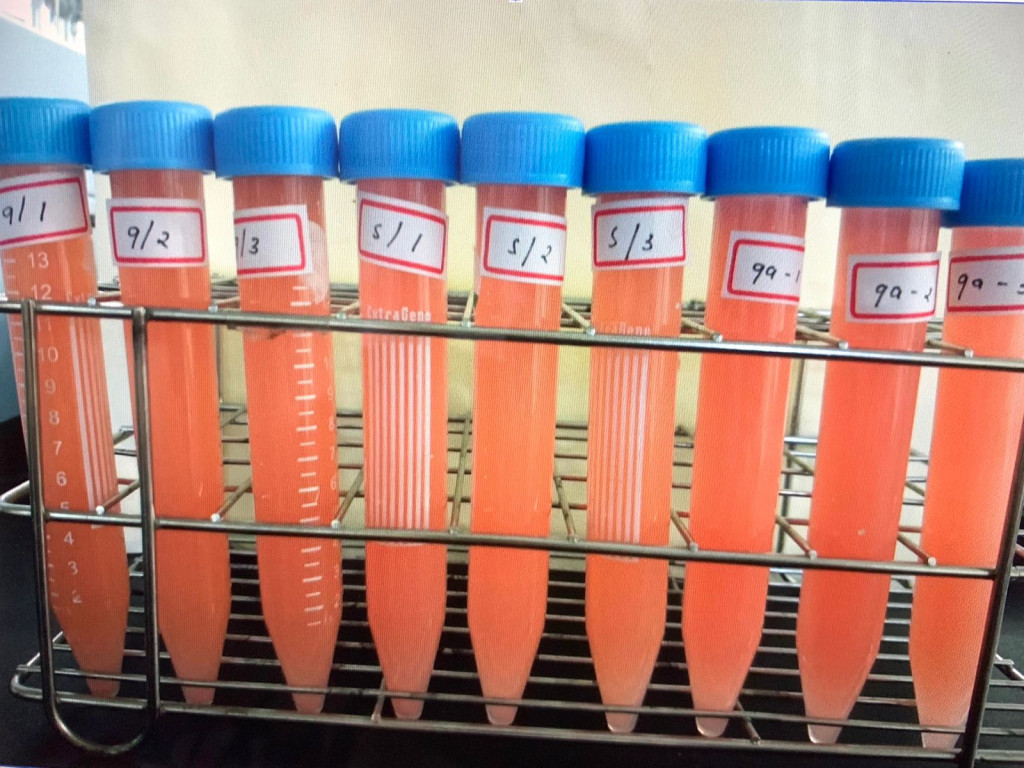
Energy production worldwide faces challenges due to dependence on fossil fuels, which will eventually run out. Meanwhile, other alternative energy developments face high production costs and low efficiency.
UGM Biology lecturer Dr. Ganies Riza Aristya is researching the fungus Rhodotorula glutinis, commonly known as red yeast, as an alternative energy source.
This fungus can be found in various environments and isolated from air, soil, grass, lakes, seas, food, fruits, human skin, and human waste.
This research aims to optimize the use of microorganisms for bioenergy production as a renewable energy source to replace fossil fuels.
Dr. Aristya mentioned the potential of red yeast as an alternative energy source. Red yeast has great potential due to its ability to accumulate and produce large amounts of lipids.
“In some cases, lipid accumulation in R. glutinis can reach 72.4%, making it a potential lipid producer for energy sources,” she told reporters on Thursday, Feb. 6, 2025.
Its ability to produce large amounts of lipids comes from a biosynthetic pathway that allows this microorganism to convert various carbon sources into high-value compounds, including lipids or other biopolymers.
The development of lipid products can go beyond biofuels to biopolymer products such as bioplastic polymers like polyhydroxybutyrate.
“Optimizing the synthesis of essential compounds in this red yeast can be done through process, genetic, or metabolic engineering,” he explained.

Dr. Aristya said the selection of red yeast or R. glutinis as research material is based on its ability to accumulate high levels of lipids, particularly triacylglycerol (TAG), which can be converted into energy in the form of biofuel.
“R. glutinis was also chosen because of its ability to grow on various substrates,” he said.
Not stopping there, red yeast’s ability to produce lipids over 15% of its dry cell weight, it can also metabolize various compounds used as carbon sources, such as monosaccharides, disaccharides, polysaccharides, organic acids, glycerol, raw materials, industrial by-products, and wastewater.

It is important to note that this fungus produces and accumulates lipids in large amounts when nitrogen is limited but carbon is sufficient.
Under such conditions, the yeast redirects its metabolism to lipid biosynthesis as an energy reserve in the form of Triacylglycerol (TAG).
The resulting lipids can be extracted and converted into biodiesel as an energy source.
“The lipids obtained from the yeast cells will be converted into biodiesel through transesterification, reacting TAG with methanol to produce biodiesel as fatty acid methyl ester (FAME). The biodiesel obtained can be used as energy,” she said.
Research on the genetic engineering of this microorganism has been ongoing for eight years.
For this research, Dr. Aristya and her team received a research grant from the Indonesia Toray Science Foundation (ITSF) under the Science and Technology Research Grant (STRG) category.
With her work titled ‘Yeast Bioengineering for Sustainable Lipid-Based Energy Production from Rhodotorula glutinis,’ Dr. Aristya was one of 18 recipients of the STRG-ITSF award in 2025 on Jan. 30 in Jakarta.
Author: Jelita Agustine
Editor: Gusti Grehenson
Post-editor: Lintang Andwyna Nurseisa Azrien

